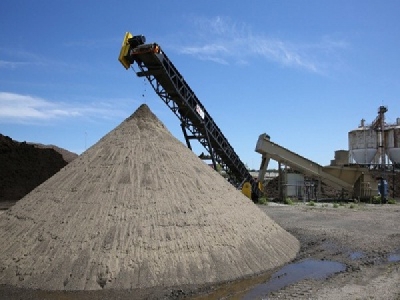
Posted on October 31, 2017
By James F. McCarty, Cleveland Connects
The U.S. Army Corps of Engineers is starting to recognize the wisdom of a practice the Port of Cleveland has employed for the past three years: repurposing sediment from its harbor.
The Corps dredges 1.5 million tons of sand and soil each year from the bottom of eight harbors and shipping channels along the southern shore of Lake Erie, from Toledo to Ashtabula. What to do with the sediment is the challenge.
Until now, the Corps has chosen the easiest and cheapest solution for all the ports except Cleveland: open-lake disposal.
But in 2020, a new Ohio law is scheduled to take effect that bans the open-lake dumping of dredged harbor sediment.
Needing a fresh approach to an old problem, the Corps has been working with the Ohio EPA to find sustainable solutions to the sediment disposal issue.
“The Army Corps of Engineers continues to coordinate with the state of Ohio at all the harbors along the Lake Erie shoreline regarding potential implementable beneficial-use projects,” said corps spokesman Andy Kornacki.
In a recent interview, Army Corps brass unveiled several plans being discussed. They include creating or restoring wetlands near the harbors being dredged; beach replenishment with clean dredged sediment at near-shore or onshore locations, including Fairport Harbor; and sediment recycling programs such as those underway in Cleveland.
The Army Corps received a wake-up call from the success of the Port of Cleveland’s sediment recycling programs, which saved the port from having to spend $150 million to build a new containment storage dike.
“We continue to coordinate with the Port of Cleveland on their project, and look for opportunities to support their facility … and to work with other port authorities on similar types of programs,” Kornacki said.
Port Vice President Jade Davis praised the Army Corps for modernizing its policies and choosing a more environmentally conscious path toward sediment use.
“That’s good progress,” Davis said. “We applaud the corps for heading in that direction. It’s all in the spirit of innovating our way out of this situation.”
Port President and CEO Will Friedman recently met with Army Corps Brigadier General Mark Toy. They talked about the recycling innovations underway in Cleveland, and the potential for their application at other Lake Erie ports, Davis said.
In the past, the Army Corps had been reluctant to embrace Cleveland’s recycling projects, and treated dredged sediment as a waste product with no value.
The only exception to that practice was at the Port of Cleveland, where the Ohio EPA said the sediment was too contaminated with PCBs, PAHs and other pollutants for open-lake dumping. The state agency required the Corps to store the equivalent of 16,000 truckloads of sediment per year in lakefront containment dikes.
As the dikes neared capacity, the Port of Cleveland responded with a green technology solution, recycling sediment captured from the bottom of the Cuyahoga River with a machine called a bed load interceptor located about seven miles upstream. When operating at full capacity, the interceptor removes tons of sediment from the shipping channel, decreasing the need for dredging downstream by 10-15 percent.
The Port also formed a partnership with the Kurtz Brothers landscaping company, which operates the interceptor, repurposing the captured sediment, and mining thousands of tons of sediment from the Port’s containment dikes. Kurtz cleans and dewaters the dike sediment, then trucks the material off the dike for sale to construction projects or for use on its own projects.
Kurtz has used truckloads of the recycled soil on the Innerbelt Bridge project and the new Towpath Trail extension, and hopes to sell some to the U.S. EPA to cap the contaminated Clark Field in Tremont.
Combined, the recycling projects have extended the life of the containment dike by 30 years, port officials said.
“We’re always looking for new ways to collaborate with the port authorities,” said David Frothingham, chief of the corps’ environmental branch in Buffalo. “There are many uses for dredged material and we fully intend to explore all of those options.”
Source: cleveland.com





